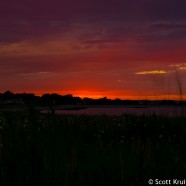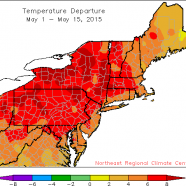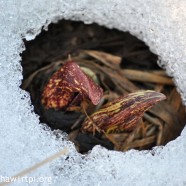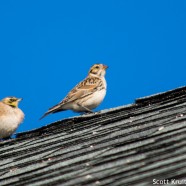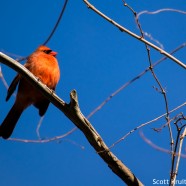Heating Up
Things are heating up! We are near the hottest part of the calendar year, and this week will be another warm one in the Northeast. All of the hot temperatures and sunny days are only making it livelier for butterflies, reptiles, wildflowers, dragonflies, feeding early migrant birds…there is a lot to see outdoors right now! Our staff is hard at work in active field projects across multiple states every day of the week, educating children of all ages as well as adults, discovering unexpected, rare or endangered life, and making a difference in pushing forward a passion for the...
Read MoreScorching May
The first half of the month of May 2015 was a quietly scorching one, with the heat turned all the way up in the Northeast. You may not believe it based on the outdoor feel of our day to day weather, but the entire region was far warmer than usual. While we did not have the extreme highs or actual heat waves, a stretch or days well into the 90s or anything particularly memorable, we have been consistently warmer than average for our highs and often above the long-term lows. The Northeast Regional Climate Center map here shows us the tale. The coolest part has been sections of Maine which were...
Read MoreSkunk Cabbage Symplocarpus foetidus
Although snow cover has been increasingly thinning over the past few weeks, this skunk cabbage plant (Symplocarpus foetidus) wasn’t about to wait any longer for the snow to thaw completely on its own. Similar to a bird or mammal, skunk cabbage is able to thermoregulate its internal temperatures regardless of the outside temperatures. Simply put, skunk cabbage is able to keep itself warm and keep from freezing under the snow. Some studies have shown that skunk cabbage can heat itself up to nearly 70°F, even when ambient temperatures are in the single digits! Due to this ability to heat...
Read MoreLapland Longspur (Calcarius lapponicus)
I recently took the photo of the flock of birds, including mostly Snow Buntings and Horned Larks, mostly for a record-type shot of a Lapland Longspur (Calcarius lapponicus) mixed in. They were enjoying some exposed grass to feed on with snow still covering so much of the earth. However, when looking at the photo I noticed I actually had two Longspurs, with a second mixed in behind it. They are in the right center of the shot. Thankfully I was able to photograph one of them a few days later while sitting on this roof with a Horned Lark sitting behind it, the heat haze from the strong sun ever...
Read MoreCardinal in Low Winter Sun
I recently photographed this Northern Cardinal in the early morning and low winter sun as it was soaking up the rays to warm up on a chilly day. It did not sing, or at least not yet. It will not be long before the species begins to call out on territories across the landscape while the sun rises in height in the sky each and every day. Scott Kruitbosch Conservation & Outreach Coordinator
Read More



